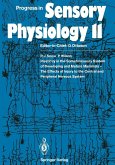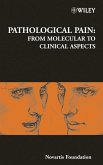Primary sensory neurons respond to peripheral stimulation by projecting to the spinal cord, where a population of neurons respond to damaging stimuli and terminate in the superficial layers of the dorsal horn. Therefore, the dorsal horns constitute the first relay site for nociceptive fibre terminals which make synaptic contacts with second-order neurons. It has recently become clear, however, that the strength of this first pain synapse is plastic and modifiable by several modulators--including neuronal and non-neuronal regulators--and studies on the fundamental processes regulating this plasticity have resulted in the identification of new targets for the treatment of chronic pain. With special emphasis on neuropathic pain, Synaptic Plasticity in Pain examines these targets and mechanisms for chronic pain in the dorsal horn, providing up-to-date research from the world's foremost pain experts. The book also delineates anatomical circuits for pain in the dorsal horn, explores the fast and slow transmissions at the pain synapse, and discusses how synaptic plasticity can be monitored in the dorsal horn during pain transmission.
Synaptic Plasticity in Pain is published at a time of intensive experimental research aimed at finding new mechanisms and targets for the treatment of chronic pain. This book will be of importance to a wide readership in the pain field including PhD students, doctoral scientists, and academics. It will also appeal to scientists who are interested in synaptic plasticity associated with other CNS functions, and to private sector drug discovery teams, who will find solid scientific support to their research in these pages.
About the Editor:
Dr. Marzia Malcangio holds a Bachelors' degree in pharmaceutical chemistry and a PhD in Pharmacology from the University of Florence, Italy. She spent most of her active scientific life in London,UK, establishing aninternationally renowned laboratory devoted to the biology of spinal cord mechanisms underlying chronic pain. Her current work explores novel approaches for targeting neuropathic and arthritic pain, and the involvement of microglia and the mechanisms governing microglial-neuronal communication. Dr. Malcangio lives in London with her husband and two sons.
Synaptic Plasticity in Pain is published at a time of intensive experimental research aimed at finding new mechanisms and targets for the treatment of chronic pain. This book will be of importance to a wide readership in the pain field including PhD students, doctoral scientists, and academics. It will also appeal to scientists who are interested in synaptic plasticity associated with other CNS functions, and to private sector drug discovery teams, who will find solid scientific support to their research in these pages.
About the Editor:
Dr. Marzia Malcangio holds a Bachelors' degree in pharmaceutical chemistry and a PhD in Pharmacology from the University of Florence, Italy. She spent most of her active scientific life in London,UK, establishing aninternationally renowned laboratory devoted to the biology of spinal cord mechanisms underlying chronic pain. Her current work explores novel approaches for targeting neuropathic and arthritic pain, and the involvement of microglia and the mechanisms governing microglial-neuronal communication. Dr. Malcangio lives in London with her husband and two sons.
Dieser Download kann aus rechtlichen Gründen nur mit Rechnungsadresse in A, B, BG, CY, CZ, D, DK, EW, E, FIN, F, GR, HR, H, IRL, I, LT, L, LR, M, NL, PL, P, R, S, SLO, SK ausgeliefert werden.
From the reviews:
"This book, based on the concept that the 'first sensory synapse between the central terminals of primary sensory neurons and dorsal horn neurons in the spinal cord is plastic and modifiable,' centers around the concept of pain ... . intended for all individuals interested in pain research, which would include PhD students, postdoctoral scientists, and academics. ... drug discovery teams in industry would also find this of interest. ... the book will serve an important role in the evolution and understanding of pain medicine." (Joseph I. Sirven, Doody's Review Service, April, 2010)
"This book, based on the concept that the 'first sensory synapse between the central terminals of primary sensory neurons and dorsal horn neurons in the spinal cord is plastic and modifiable,' centers around the concept of pain ... . intended for all individuals interested in pain research, which would include PhD students, postdoctoral scientists, and academics. ... drug discovery teams in industry would also find this of interest. ... the book will serve an important role in the evolution and understanding of pain medicine." (Joseph I. Sirven, Doody's Review Service, April, 2010)









